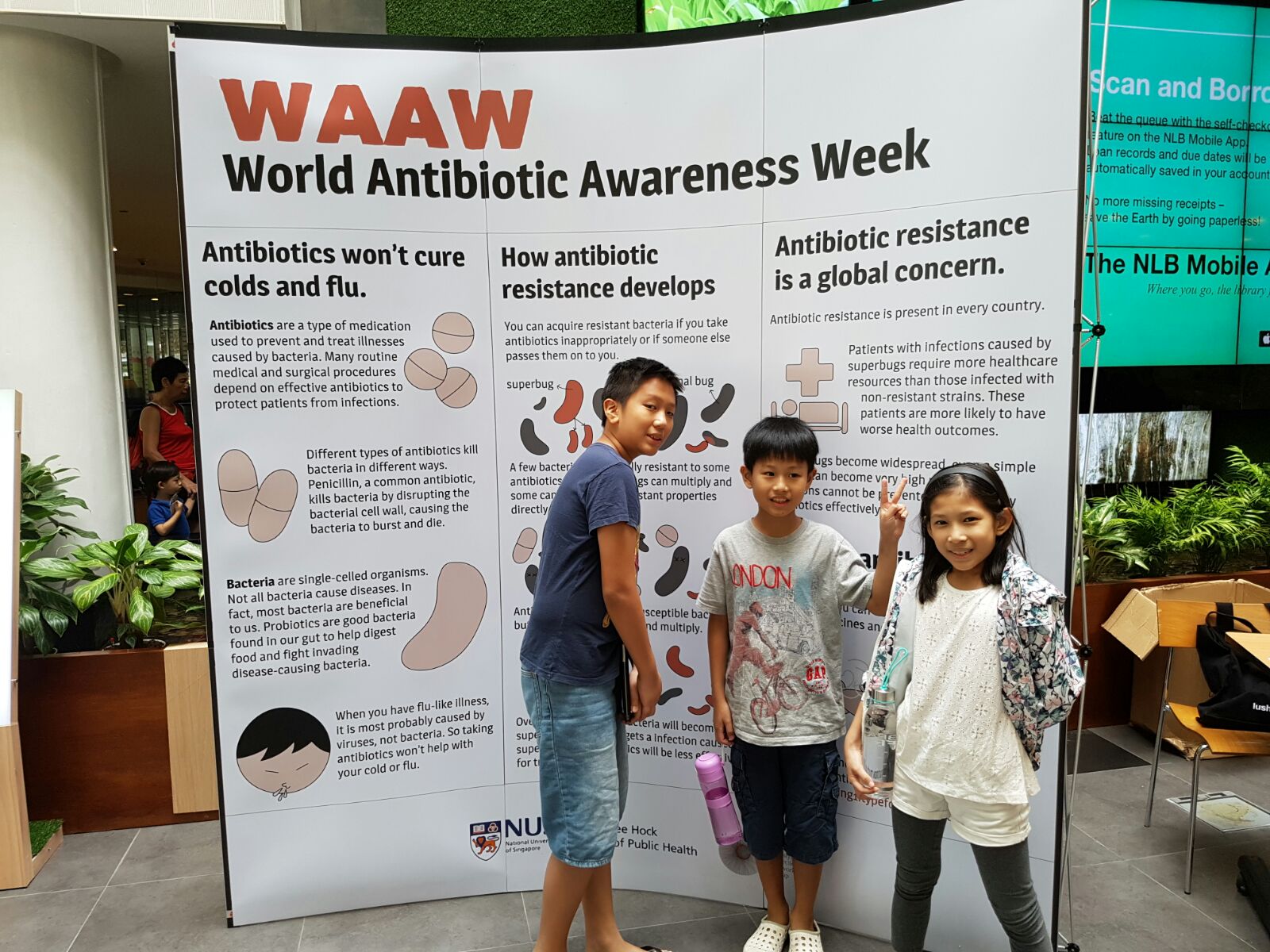The World Antibiotic Awareness Week 2016, led by the World Health Organisation from 14 – 20 November, aims to increase the awareness of global antibiotic resistance and encourage best practices among the general public, health workers and policy makers to avoid the further emergence and spread of antibiotic resistance. Antibiotic resistance, which results when antibiotics lose their efficacy against bacteria that cause infections in humans and animals, is a major global public health concern which threatens to cause severe social and economic implications on a global scale. At the United Nations General Assembly in September, world leaders pledged to tackle the issue and develop national action plans to monitor antibiotic resistance and misuse, as well as provide stronger regulatory systems to reduce misuse in human health and agriculture.
The Resistable Rise of Antibiotic Resistance
Globally, antimicrobial resistant infections kill 700,000 people a year, writes Asst Prof Clarence Tam for The Straits Times, and compounding this is the issue that antimicrobial resistance is man-made, a result of overuse and misuse of antimicrobial drugs, especially antibiotics.
Everyone can play their part in reducing the demand for antibiotics, adds Dr Tam, by keeping updated on vaccinations and maintaining good hand hygiene, and reducing the consumption of and demand for animal products produced using irresponsible practices.
Antimicrobial Resistance: Implications for Asia
Rates of drug-resistant bacteria, including those in high-income countries such as Singapore and Brunei, remain high relative to Australia, the US and parts of Europe. Over-the-counter accessibility to antibiotics in many Asian countries and consumption of antibiotics as growth promoters or for prevention of infections in agriculture are likely reasons for the high rates.
An overall health-systems-based approach, including a re-assessment of how hospitals are built and operated is required, especially in many Asian countries where lack of access to life-saving antibiotics is more pertinent than antimicrobial resistance, notes Associate Professor Hsu Li Yang, Programme Leader of the NUS Saw Swee Hock School of Public Health’s Antimicrobial Resistance Programme. Regional and international cooperation, along with increased funding, is also needed to drive change.
The Campaign for Global Antibiotic Awareness
A/Prof Hsu also called for a mindset change and more public education on the use and misuse of antibiotic resistance in an article for TODAY, noting that Singapore has not yet had an independent antibiotic awareness campaign.
Governmental action alone is insufficient to change a culture in which antibiotics are perceived as a commodity required for viral infections, and individuals can get involved by getting educated on the various issues surrounding antibiotics.
Concern over potential ‘superbug’ bacteria in Southeast Asia
Poor healthcare practices and limited awareness of the threat of antimicrobial resistances are putting Southeast Asia at risk of a superbug outbreak.
Countries in Southeast Asia also have higher rates of antibiotic resistance compared to European and North American countries, says A/Prof Hsu Li Yang. “Risk factors” in the Southeast Asia region include overstretched healthcare systems in various countries, inappropriate and excessive prescription of antibiotics, inter-hospital transfers including the phenomenon of medical tourism, overuse of antibiotics in the agricultural setting and poor environmental hygiene and sanitation, adds A/Prof Hsu.
Following reports of an estimated 4.7 million deaths in Asia due to antimicrobial resistance, Thailand has announced a five-year programme aiming to halve antimicrobial resistant infections by 2021.
World Antibiotic Awareness Week (WAAW) 2016
Researchers from the Singapore Social, Lifestyle and Infection Networks Group (SLING) at the NUS Saw Swee Hock School of Public Health organised an Antimicrobial Resistance awareness booth at the Jurong East Regional Library on 12-13 Nov 2016, to educate children and parents about bacteria, antibiotics and antibiotic resistance.


Some booth activities included learning about bacteria, viruses, antibiotics and antimicrobial resistance using self-made educational flash cards (left), as well as a story-telling session on the importance of keeping germs at bay (right).


The children and their parents also experienced looking at bacteria through a microscope (left) and also got kids involved by pledging to be “germbusters” by washing their hands regularly (right). Other fun activities included using Glo Germ to demonstrate the ease of germ transmission, and a photo booth for kids dressed as germs and antibiotics.
All children and their parents also received WAAW canvas bags, badges, notebooks and tissues at the end of the event.
Get the latest and learn more on antibiotic resistance at the Singapore Social, Lifestyle and Infection Networks Group (SLING) website.
Media Coverage:
- Southeast Asia Globe Magazine, 22 Nov 2016
- The Straits Times Opinion, 16 Nov 2016
- Shin Min Daily News, 10 January 2017 (adapted from “The resistible rise of antibiotic resistance” in The Straits Times Opinion, 16 Nov 2016)
- Brink Asia, 13 Nov 2016
- TODAY, 7 Nov 2016


